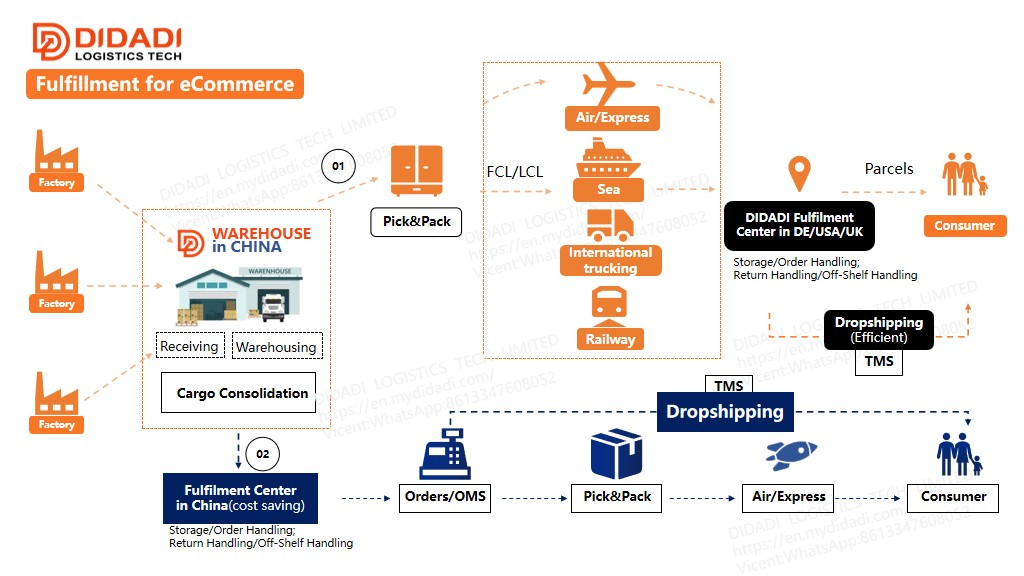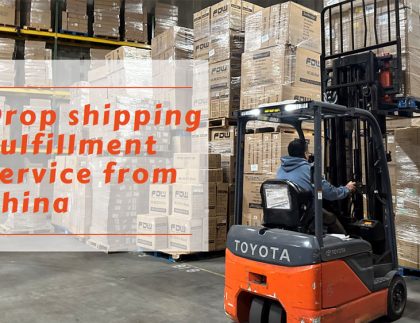Managing Surplus Inventory: A Guide for E-commerce Sellers
Merchants require an adequate amount of inventory to fulfill customer demand, along with a safety stock as a precautionary measure.
However, in the pursuit of avoiding stockouts, there is a possibility of inadvertently accumulating surplus inventory that exceeds the sales potential.

In the world of e-commerce, surplus inventory can be a significant challenge for online sellers. It not only ties up valuable capital but also occupies valuable warehouse space.
However, with the right strategies and tools, sellers can effectively manage their surplus inventory and minimize its impact on their business.
In this article, we will explore five key subheadings that outline actionable steps to address surplus inventory and how 3pl providers such as DIDADI Logistics Tech can assist e-commerce buyers in overcoming this challenge.
Table of Contents
Understanding Surplus Inventory
Before tackling surplus inventory, it’s crucial to understand what it entails.
Surplus inventory refers to excessive stock levels that surpass current demand, leading to a surplus of products.
It can occur due to various reasons such as inaccurate demand forecasting, sudden changes in market trends, or seasonal fluctuations. Recognizing surplus inventory is the first step towards implementing effective solutions.
When dealing with surplus inventory, it’s essential to distinguish between two types:
- Slow-moving inventory: It refers to products that are selling at a slower pace than anticipated;
- Obsolete inventory: It comprises items that are no longer in demand or have become outdated.
By identifying which category each product falls into, e-commerce sellers can develop targeted strategies and improve inventory management to address the specific challenges associated with each type.
Conducting a Comprehensive Inventory Audit

To gain clarity on surplus inventory, it’s essential to conduct a thorough inventory audit.
This audit involves analyzing stock levels, sales data, and historical trends to identify slow-moving or obsolete items.
By categorizing products based on their demand and profitability, sellers can prioritize their surplus inventory management efforts and devise targeted strategies.
During the inventory audit, sellers should consider factors such as product shelf life, customer preferences, and market trends. By evaluating the age and condition of inventory, sellers can determine whether products are at risk of becoming obsolete and take necessary action to prevent losses.
Additionally, sellers should analyze sales data and customer feedback to identify patterns and gain insights into product performance.
This information can help in making informed decisions about pricing, promotions, and product assortment. It’s also important to assess the impact of surplus inventory on cash flow and storage costs, as these factors directly affect the profitability of the business.
Implementing Inventory Optimization Techniques
Inventory optimization techniques play a pivotal role in managing surplus inventory.
Implementing demand forecasting models
One such technique is implementing demand forecasting models, which leverage historical data, market trends, and customer insights to predict future demand accurately.
By aligning procurement and production processes with anticipated demand, sellers can minimize the risk of excess inventory.
Implementing a dynamic pricing approach

By monitoring market conditions and adjusting prices accordingly, sellers can stimulate demand for slow-moving items. This approach can be particularly useful during seasonal fluctuations or when dealing with perishable goods.
Adopting an efficient inventory replenishment strategy
By using real-time sales data, sellers can automate the reordering process and ensure that inventory levels are replenished in a timely manner. This helps prevent stockouts and excess inventory situations.
Leveraging Sales and Marketing Strategies
Sales and marketing strategies can be instrumental in reducing surplus inventory.
- Launch promotional campaigns and offer discounts on slow-moving items. By creating a sense of urgency or providing incentives to customers, sellers can stimulate demand and clear excess stock.
- Cross-selling and bundling products can also be effective tactics to drive sales and reduce surplus inventory.
- Utilizing targeted advertising and personalized marketing campaigns can help reach relevant audiences and increase product visibility.
- Engaging with customers through email marketing, social media, and influencer collaborations can also create awareness about slow-moving products and generate interest.
By highlighting the unique selling points of these products or showcasing their versatility, sellers can attract buyers who may have overlooked them previously.
Additionally, e-commerce sellers should explore partnerships with complementary businesses or participate in industry events to expand their reach. Collaborating with other sellers or participating in joint marketing efforts can lead to increased exposure and potential sales for slow-moving items.
Partnering with a 3pl Provider Such As DIDADI Logistics Tech
DIDADI Logistics Tech is a cutting-edge 3PL provider that offers comprehensive solutions to e-commerce buyers facing surplus inventory challenges.
With its state-of-the-art warehouse management system and seamless integration capabilities, DIDADI empowers sellers to streamline their operations, reduce costs, and efficiently manage surplus inventory.
Moreover, DIDADI’s warehouse management system optimizes order fulfillment by automating processes, reducing errors, and improving efficiency. The system integrates with popular e-commerce platforms, allowing sellers to synchronize inventory data and streamline order processing. Additionally, DIDADI’s advanced routing algorithms help minimize shipping costs and delivery times, enhancing the overall customer experience.

DIDADI Logistics Tech’s expertise in inventory management and logistics enables e-commerce sellers to overcome the challenges associated with surplus inventory. By leveraging the platform’s capabilities, sellers can make informed decisions, optimize their supply chain, and reduce the financial burden of excess stock.
Previous Post: Why Ecommerce Retailers Should Outsource Fulfillment Center to Scale Their Businesses?
Start your ship now!
- Improve your cross-border shipping
- Decrease expenses
- Accelerate deliveries









